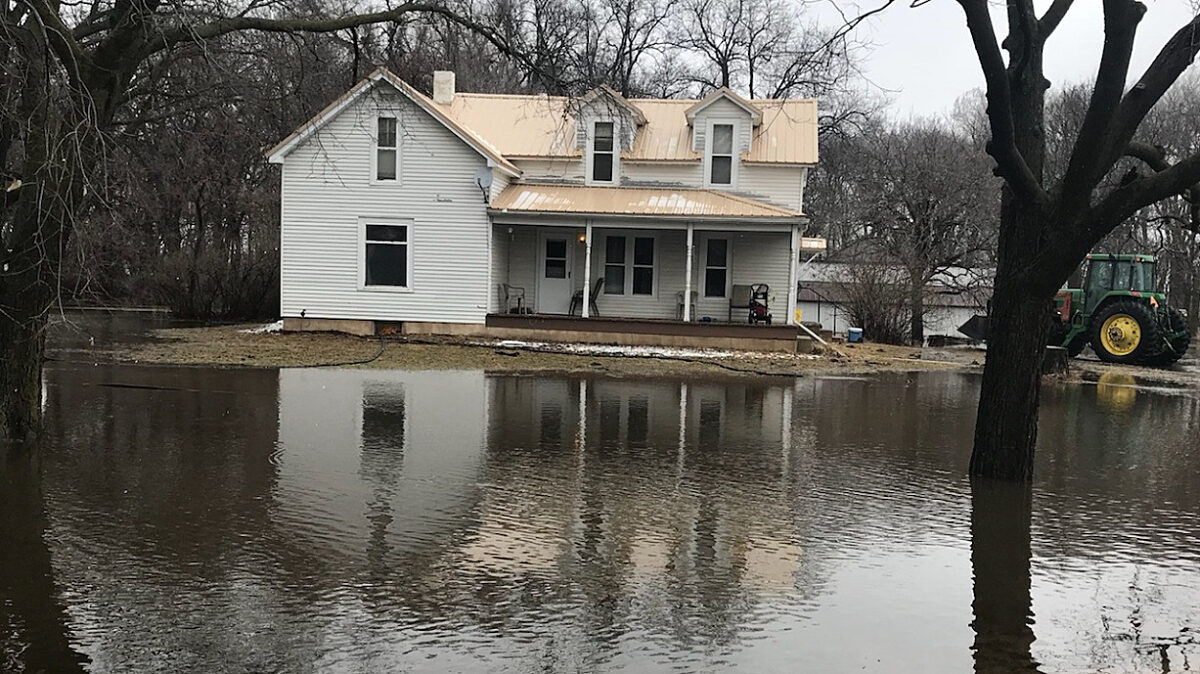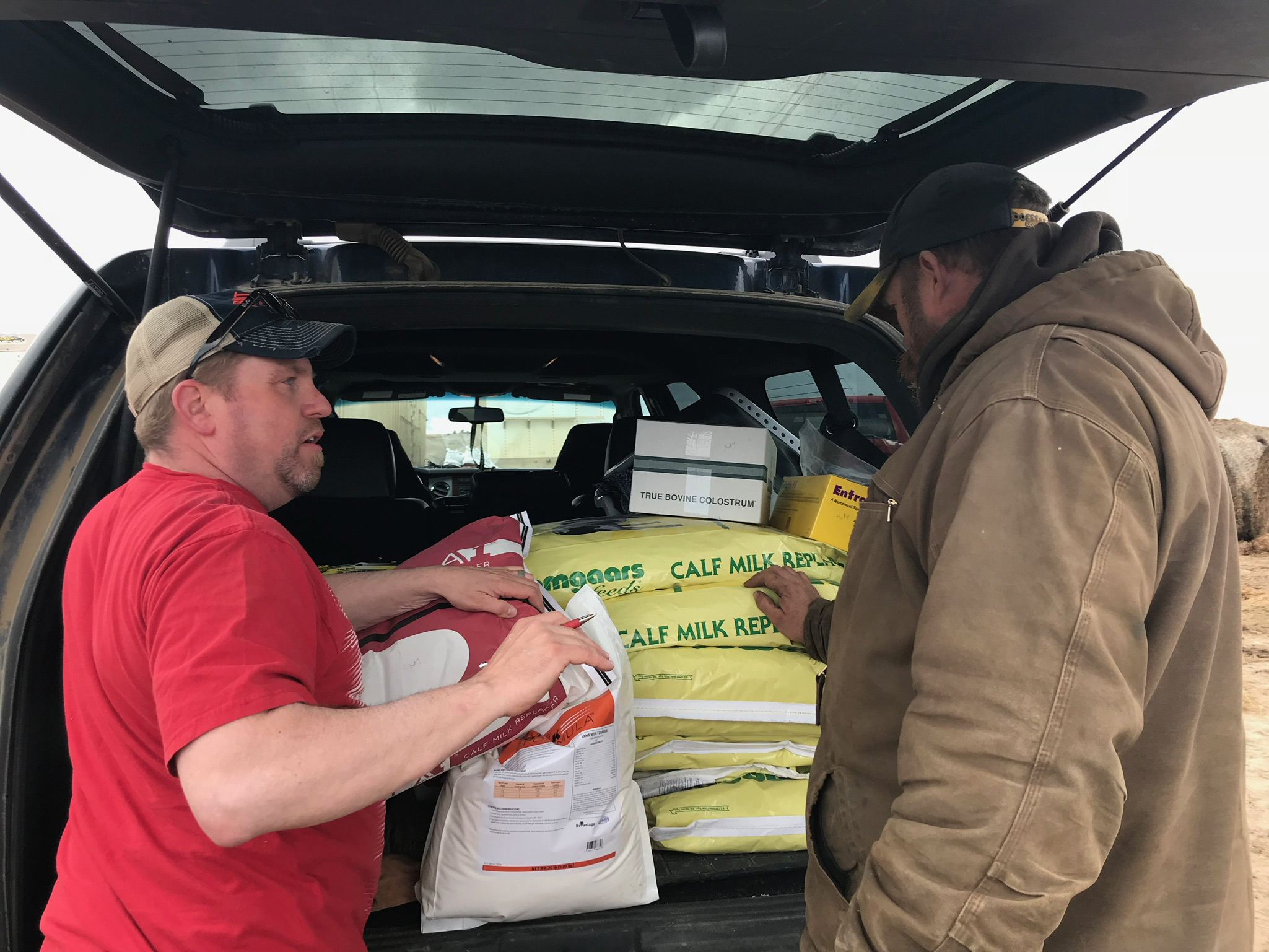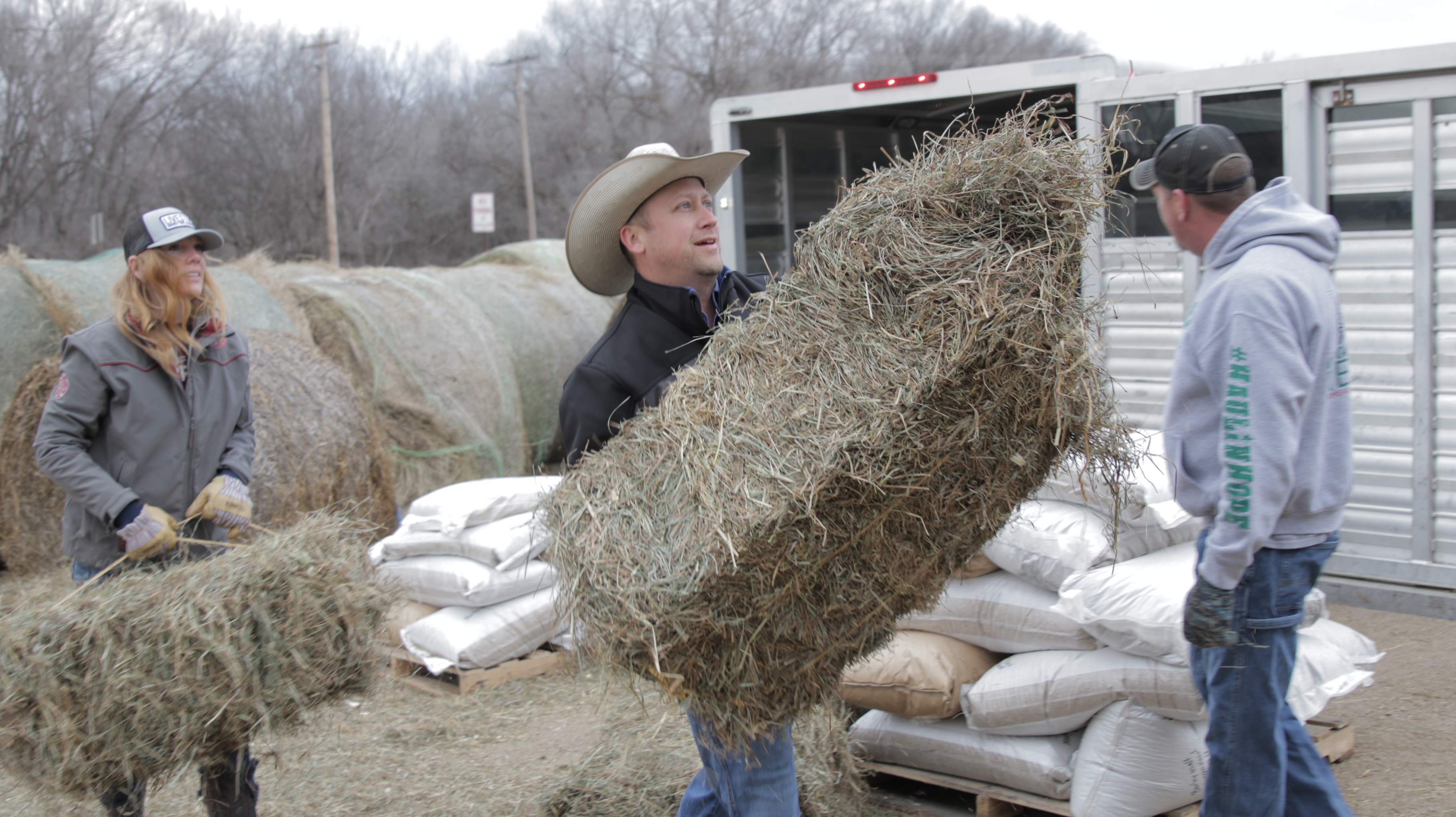After the Storm: How the Farm Bureau Family Came Together in the Wake of Disaster
Erin Anthony
Director, Communications

photo credit: Nebraska Farm Bureau, Used with Permission
Erin Anthony
Director, Communications
By Bailey Corwine
For three days in March, a perfect storm unfolded across the state of Nebraska. Heavy rains, abnormal for that time of year, pounded the frozen ground and immediately ran into already-full streams and rivers. Eventually, the state’s water containment system simply could no longer handle the deluge, and the Spencer Dam on the Niobrara River collapsed.
Bridges and roadways were washed away, along with homes, farm buildings and fences. Sand from the streambeds of the state’s waterways was pushed into agricultural fields, and cattle were left stranded on high ground, surrounded by water in every direction.
The storm, which became known as a “bomb cyclone,” affected 75% of the counties in Nebraska. Floodwaters rose to historic levels across the state, and residents in both urban and rural communities suffered an estimated $12 billion in damage.
However, as the storm was winding down and Nebraska’s citizens began to assess the damage, a family was coming together: The Farm Bureau family.
Almost immediately, the Nebraska Farm Bureau established a Disaster Relief Fund, dedicated to helping farmers, ranchers and those in rural communities get back on their feet after the catastrophic event.
“Within a very short period of time, we set up three sections of our website dedicated to the storm,” said Nebraska Farm Bureau President Steve Nelson.
The first section provided important information, such as contact numbers for the Nebraska Emergency Management Agency and Nebraska Department of Agriculture. The second section, the Agriculture Disaster Exchange, acted as a virtual “want ads” section, where Farm Bureau members could both seek and offer help to others in the state.

The third section, though, was really where the Farm Bureau family came together. Through the Disaster Relief Fund, individuals, groups or organizations could make tax-deductible donations to the Nebraska Farm Bureau Foundation, and all proceeds donated would go directly to farmers, ranchers and those in rural communities.
Much like the rain, the generosity was overflowing. More than $3 million was raised, with donations coming from state and county Farm Bureaus, and even from folks not involved with Farm Bureau in any way, but trustful that the organization would handle their donation appropriately.
“We, at Farm Bureau, have a reputation that has been built over generations,” Nelson said. “The reason so many people were willing to contribute money to the fund is that they knew we are a trustworthy organization.”
In total, donations came from 26 states, 18 state Farm Bureaus and 126 county Farm Bureaus. Countless other state and county Farm Bureaus donated livestock feed, fencing supplies and other needed materials. Hay was also a popular donation, and eventually the Nebraska National Guard was mobilized to airdrop bales to stranded cattle.

Nebraska Farm Bureau staff also pitched in, many of them leaving their office jobs behind to head out into the field.
“Almost every area had some damage, so every one of our regional people were out in the field helping with the recovery effort,” Nelson said. Those in the office were busy coordinating donations, making sure that money and supplies made it to those who needed it most.
“I’m extraordinarily proud of our team and how they stepped up to respond to the needs of our community, working extra time and going above and beyond the call of duty,” Nelson said.
Recovery, which will likely take several years, was truly a cross-country effort, and Nelson said lately he has been focused on showing gratitude to everyone who supported Nebraska in the aftermath of the March storm.
“A huge thank you needs to go out to all of those that helped,” said Nelson. “The fact that people stepped up right away with significant financial contributions made it possible for us to help people when they needed help the most.”
Nelson personally witnessed the Farm Bureau family come together after the disaster in Nebraska, though he said was not surprised by the outpouring of support.
“You could look at any number of calamities that have happened in different states, and the Farm Bureau family always pulls together,” Nelson said.
Though such support is the Farm Bureau way, Nelson is extremely grateful for the help provided to Nebraska Farm Bureau members.
“It really is part of the story of the Farm Bureau family willing to step up when there’s a need, with such extraordinary generosity,” Nelson said. “It’s very humbling and something that I’m very grateful for.”
Today, things are starting to look brighter in Nebraska. Many families have begun to rebuild, and nearly all the money donated to the Relief Fund has been distributed to those in need.
“Our commitment was to make sure we distributed every penny that came in, and I think we’ve done a really good thing, with the help of the Farm Bureau family,” Nelson said.
However, the long-term damage to Nebraska farms and ranches will most likely take years to repair. Still, Nelson is confident that agriculture in Nebraska will move forward.
“Agriculture will continue to be here and produce,” Nelson said. “It will take multiple years for some people to get past this, but we’ve dealt with major issues before and we’ll find solutions to the problems we have today.”
As the farmers, ranchers and other residents of rural communities continue to rebuild what was washed away, the Farm Bureau family will stand by, steadfast in their support.
Bailey Corwine is an intern in the American Farm Bureau Federation’s Communications Department. She will graduate from the University of Arkansas in December with a degree in agricultural communications.
Trending Topics
VIEW ALL